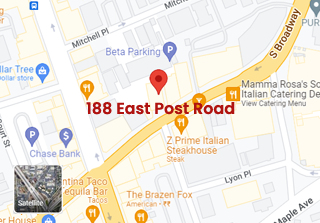Was your home built before 1980? It may have a hidden problem that will prevent you from selling! Lead-Based paint is a well known hazard to the health of children and to pregnant women that was used extensively in pre-1980 homes. Exposure to such paint can lead to lead poisoning.
If you are a seller of, or seller’s real estate agent for an older home located in New York, you need to be aware of your obligations under the law regarding lead based paint, because the failure to make an appropriate disclosure will land you and your homeowner client in court. It was determined by Congress that housing stock built before Ronald Reagan became President contains more than 3,000,000 tons of lead in the form of lead-based paint, with the vast majority of homes built before 1950 containing substantial amounts of lead-based paint. In 1992, Congress enacted the Residential Lead-Based Paint Hazard Reduction Act of 1992 (RLPHRA) in response to these hazards. Congress mandated that the now familiar Lead Warning Statement be provided in a separate sheet of paper attached to residential real estate contracts:
“Every purchaser of any interest in residential real property on which a residential dwelling was built prior to 1978 is notified that such property may present exposure to lead from lead-based paint that may place young children at risk of developing lead poisoning. Lead poisoning in young children may produce permanent neurological damage, including learning disabilities, reduced intelligence quotient, behavioral problems, and impaired memory. Lead poisoning also poses a particular risk to pregnant women. The seller of any interest in residential real property is required to provide the buyer with any information on lead-based paint hazards from risk assessments or inspections in the seller’s possession and notify the buyer of any known lead-based paint hazards. A risk assessment or inspection for possible lead-based paint hazards is recommended prior to purchase.”
Is the buyer’s agent responsible for providing this disclosure and can the buyer’s agent be held liable for damages under RLPHRA if the agent fails to provide the disclosure? The Appellate Division, Second Department has just emphatically answered NO to these questions in Felix v. Thomas R. Stachecki Gen. Contracting, LLC, http://www.nycourts.gov/reporter/3dseries/2013/2013_03966.htm.
The plaintiffs in Felix were purchasers of real property. They hired a buyer’s agent in connection with the transaction. The plaintiffs sued the buyer’s agent alleging that the agent was liable for damages for failing to make required disclosures under the Act. The lawsuit was dismissed on appeal where the Court found: The statutory language of the RLPHRA “is unambiguous with regard to the liability of real estate agents; only seller’s agents are liable” for the failure to ensure compliance with its provisions. Indeed, the Court flat out stated that “it would be contrary to the unambiguous language of the statute … to impose a duty on an agent or representative of a buyer” So while the buyer’s agent can breathe a sigh of relief here, seller’s agents take note. If you fail to make the required lead paint disclosure, a lawsuit will likely follow.








